How do you convey empathy concisely and unambiguously across languages? 😞
Facebook even has a patent on an Emoji reaction button. See our update below.
The Dislike button has been the most requested feature from Facebook’s users for years. Finally, this week CEO Mark Zuckerberg revealed the company is building a way for people “to express that they understand and that they relate to you” when you share something sad, such as news of a natural disaster or a death in the family.
Many news outlets misinterpreted this as Facebook building a thumbs-down Dislike button, despite the fact that Zuck literally said “We didn’t want to just build a Dislike button because we don’t want to turn Facebook into a forum where people are voting up or down on people’s posts. That doesn’t seem like the kind of community we want to create.”
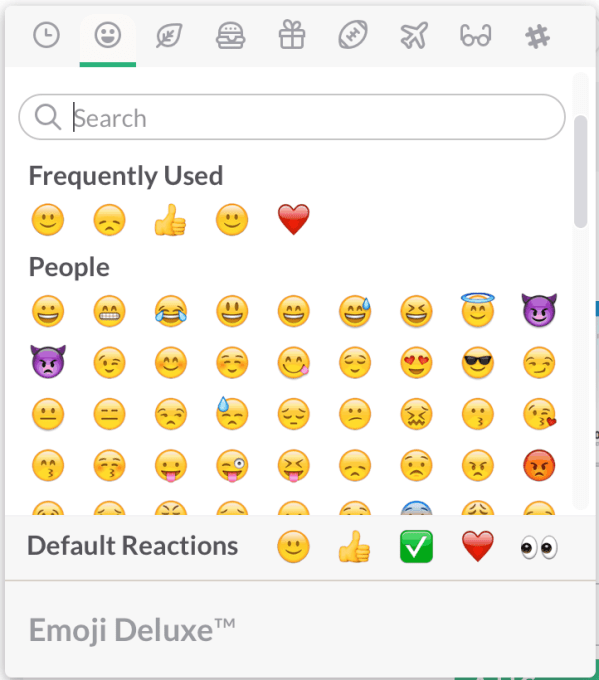 So what will this button look like? One option I initially put forward was “Sorry” because it’s relatively quick, obvious, and translatable. But the more I think about it, Emoji seem like perhaps a better option.
So what will this button look like? One option I initially put forward was “Sorry” because it’s relatively quick, obvious, and translatable. But the more I think about it, Emoji seem like perhaps a better option.
You might be quick to say that Slack already has this feature. In the workplace chat app, you can “Add A Reaction” and then pick from a huge list of standard Emoji or custom-made ones your company has uploaded to respond to a post.
But while Slack’s system might work for a more high-touch messaging app, it’s very open-ended. If everyone picks a different Emoji to react with, you get this big stack of them. Many Emojis, while funny, aren’t very clear in their meaning. What does it mean to Pizza something? Or Moonface? Or Penguin?

That’s why a more apt model for how Facebook could approach the empathy button and expressing other non-Like emotions might be something similar to Path’s reactions.
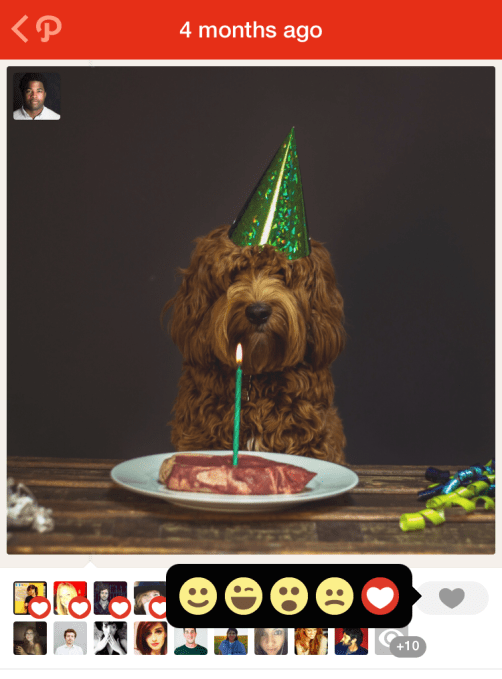 If you want to respond to a Path post with any Emoji or sticker, you can do so in the comments. But hitting the Heart icon (Path’s version of the Like) reveals just five options:
If you want to respond to a Path post with any Emoji or sticker, you can do so in the comments. But hitting the Heart icon (Path’s version of the Like) reveals just five options:
- Heart – Essentially a Like, a show of appreciation
- Smile – Similar to a Like, but more about your own positive reaction than appreciation
- Winking Smile – A show of laughter or gratitude for someone’s humor
- Surprised – A reaction of shock or disbelief
- Frown – An expression of sadness, empathy, or sympathy
With these five Emoji, you can express a large swath of common emotions. When tapped, these Emoji would stack up beneath a post. You might not get bashfulness, anger, stress, or other more niche feelings, but that’s what the comments are for.
Danny Trinh, founder of Free and Path’s designer at the time who came up with the idea tells me originally, Path considered using a slider from happy to sad to convey emotions. But it seems that wasn’t quick or comprehensible enough.
Then Trinh had the thought of boiling down reactions to the core emotions. He’d previously worked at Digg that popularized the upvote and downvote idea. He tells me the company quickly butted up against the awkwardness of people upvoting things that were sad, like a celebrity’s death. In Path’s more intimately personal social networking app, he wanted something more nuanced. Here’s what he suggested:
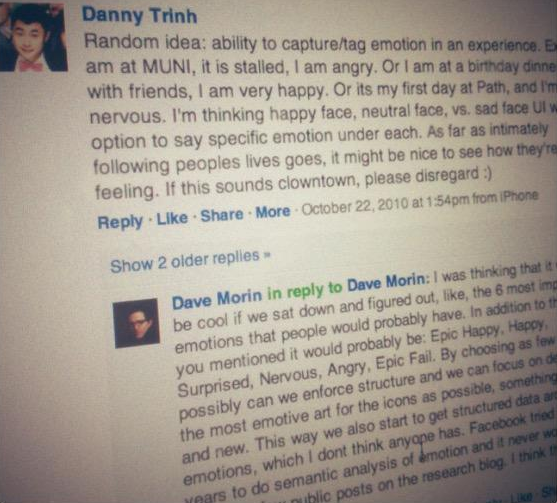
Path began to experiment with different emotional categories. Then Trinh says co-founder and CEO Dave Morin “dug up some papers that broke down a bunch of the major emotion categories and we settled on those five”. This allowed for a more concise interface where all the reaction Emoji were immediately recognizable.
I think a similar system could work well for Facebook. It’s never been shy about cribbing designs from other social apps, especially Path. Recently, Facebook tested using Path-style flyout buttons for posting statuses. Back in 2013, Facebook turned the Send button on Messenger into a Thumbs Up if you hadn’t written any text…just like Path’s Check Mark.
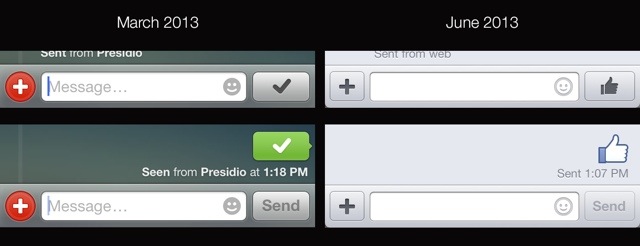
Path’s Check Mark (left) seems to have inspired Facebook Messenger (right) showing a Like button when you haven’t written any text
If Facebook added a Sad Emoji or a limited range of Emoji, it could give people a universally understandable way to instantly share emotions beyond Likes without overly cluttering its interface. In fact, Facebook already offers ways to share Emoji-based “Feeling” status updates. This would just be extending Emoji sharing into a feedback format.
Done right, Emoji feedback could instruct Facebook’s News Feed sorting algorithm that something shared is important and showed to more people, even if it’s not Likeable.
—
Update: 9/18
In Fact, Facebook Patented An Emoji Reaction Button
Apparently I was on the right track. The morning after publishing this article, The Next Web’s Natt Garun dug up an old Facebook patent filing for an Emoji reaction button. It looks almost identical to Path’s Emoji Selector that I suggested Facebook might mime, and was filed two years after Path debuted the design.
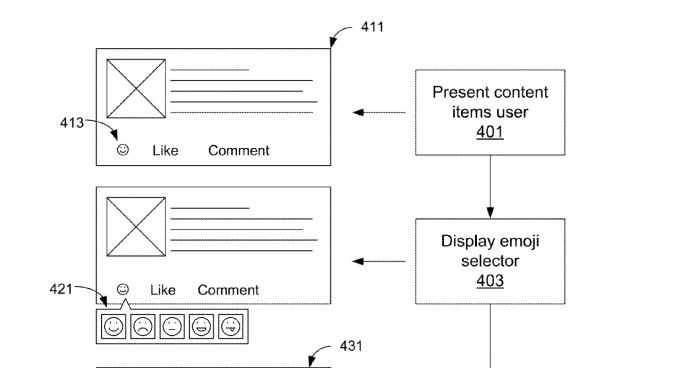
The patent filing shows a Emoji Selector button next to the Like and Comment buttons on Facebook posts. When clicked, it reveals a small set selectable Emoji, with 5 in one concept drawing and 14 in another. Once tapped, a thumbnail of the sender’s face with their chosen emoji overlaid appears in a row above the post’s Like count and Comment reel.
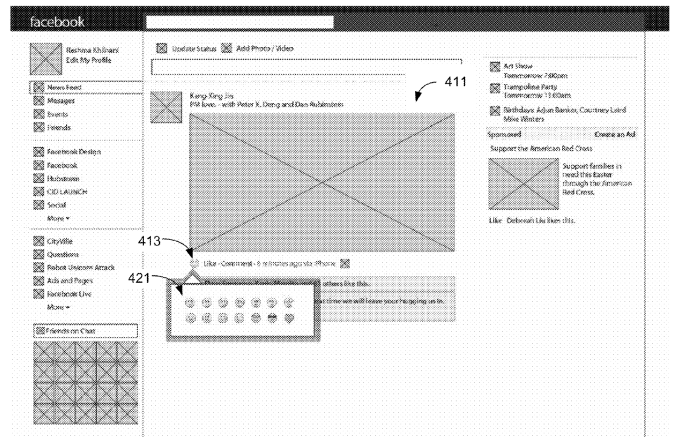
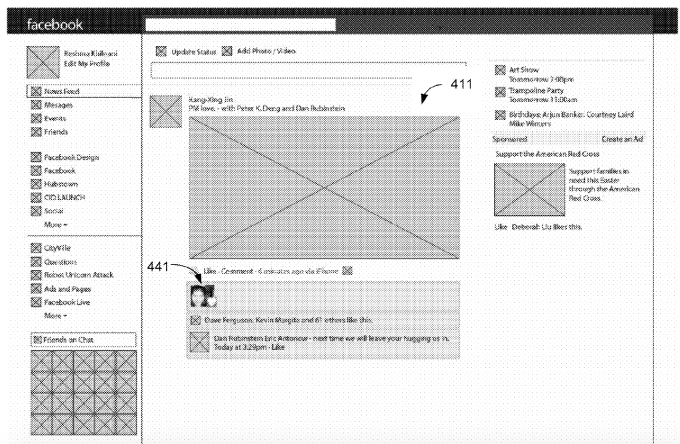
While the final design could certainly be different, it seems Facebook does see merit in offering a limited selection of emoji reactions, likely including a sad face, as an answer to requests for a Dislike button.
